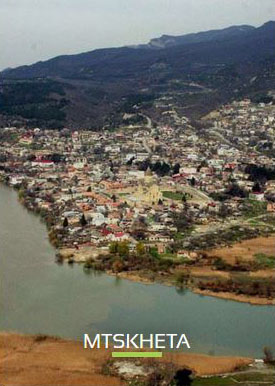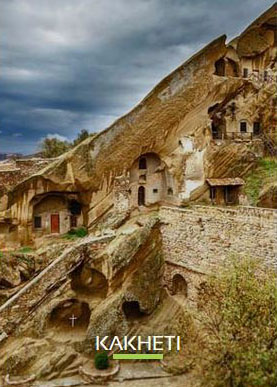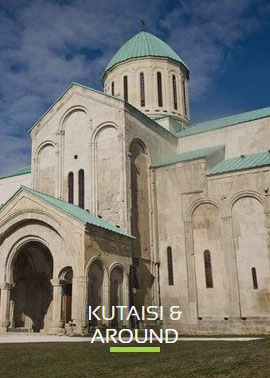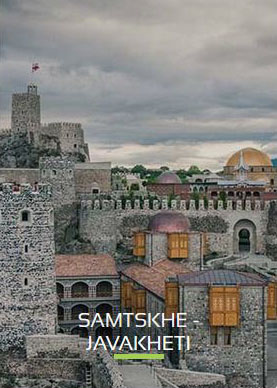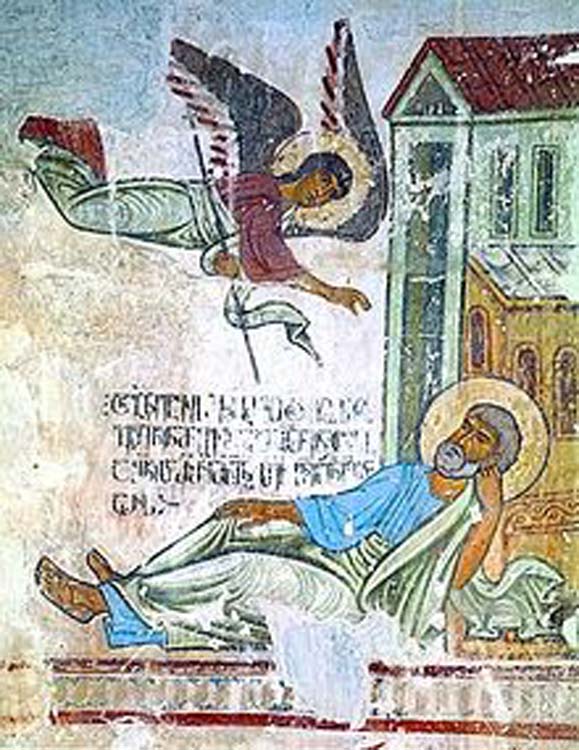
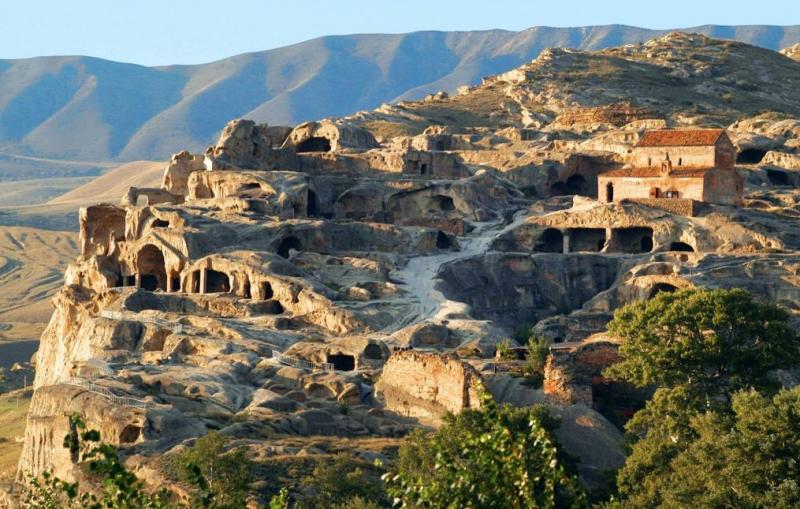
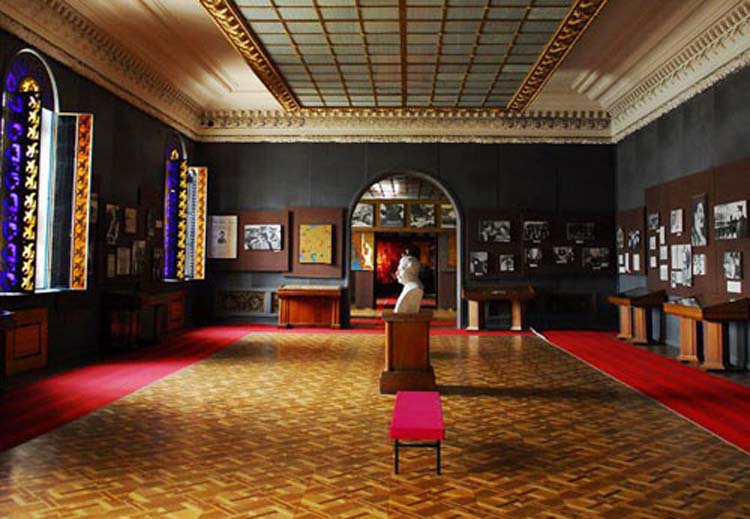
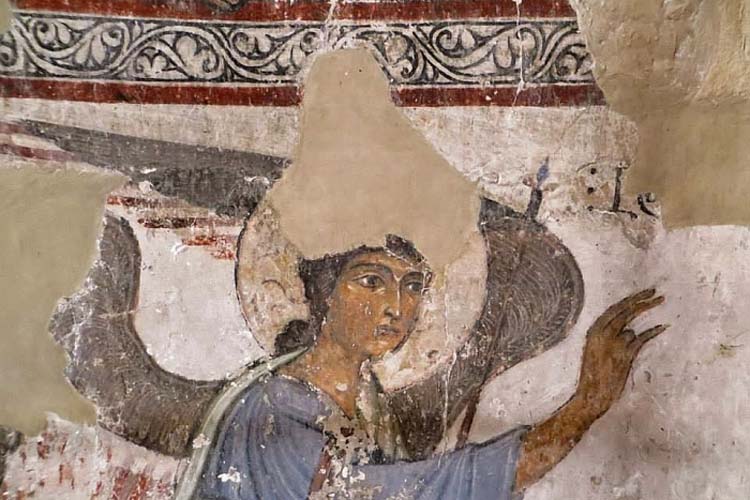
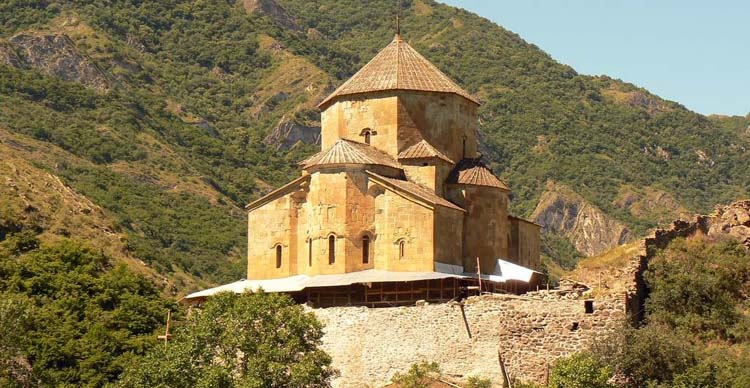
In The Middle of Georgia
GORI & AROUND
The town of Gori, which serves as the capital of the Shida Kartli region, occupies a strategic position at the confluence of the Mtkvari and Liakhvi rivers. Its situated 76 kilometers to the west of Tbilisi, at the elevation of 588 meters above sea level. Reverberating with historical significance, Gori gained prominence as the birthplace of Joseph Stalin. Beyond this association, Gori boasts a rich historical tapestry, its origins stretching back to the early Bronze Age.
Located in proximity to the Georgian-Ossetian conflict zone, Gori maintains a connection to the breakaway South Ossetian capital of Tskhinvali via a disused railway line, abandoned since the early 1990s. In the 2000s, Georgia augmented its military infrastructure both within and around the city.
The tumultuous events of the 2008 Russo-Georgian War cast a shadow on the town. The Russian Air Force initiated aerial assaults from the war's outset, targeting military installations and residential sectors in Gori. These strikes exacted a toll on civilians, resulting in injuries and loss of life.
Gori's landscape is adorned with a myriad of cultural and historical treasures. While many outside observers associate the town with Joseph Stalin, in the annals of Georgian history, Gori is intrinsically linked with the citadel that is the Gori Fortress, perched atop a precipitous hill and overlooking the city's heart. On another eminence stands the St. George's Church of Gorijvari, a venerable site of pilgrimage dating back to the 18th century. Not far from Gori, the ancient rock-hewn town of Uplistsikhe and the Ateni Sioni Church, a testament to the 7th century, further enrich the area's historical tableau.
Stalin's imprint on the town is underscored by the Joseph Stalin Museum, a central feature in downtown Gori. Previously, a statue of Stalin stood before the Gori City Hall until its removal on December 20, 2012.
STALIN MUSEUM
The museum comprises three distinct sections, all strategically situated within the central square of the town. Its official dedication to Stalin took place in 1957. Following the dissolution of the Soviet Union and Georgia's move towards independence, the museum was shuttered in 1989. However, subsequent efforts led to its revival, transforming it into a popular draw for tourists.
Stalin's Birthplace: Nestled within a Greco-Italianate pavilion, a humble wooden hut stands as a testament to history. This unassuming abode marked the site of Stalin's birth in 1878 and his early years spent within its walls. The duplex structure harbors a noteworthy past - the left side was leased by Stalin's father, Vissarion Jughashvili, a local cobbler, while he maintained his workshop in the basement.
Stalin Museum: The central nucleus of the museum complex is a grand palazzo characterized by Stalinist Gothic architecture. Construction commenced in 1951 ostensibly as a repository for local history, yet it unmistakably evolved into a memorial to Stalin, who passed away in 1953. The museum's extensive array is partitioned into six halls, each arranged in roughly chronological sequence. The exhibits encompass various items reputedly owned by Stalin, spanning from personal effects to office furniture and a collection of gifts bestowed upon him. The assortment is further enriched by an abundance of supporting material - documentation, photographs, paintings, and newspaper articles. The display culminates with the presentation of one of twelve existing death masks of Stalin, cast shortly after his demise.
Stalin's Personal Railway Carriage: Adjacent to the museum, a notable artifact occupies the scene - Stalin's personal railway carriage. Clad in a green hue, this armored Pullman carriage boasts a weight of 83 tons. Serving as Stalin's mobile abode from 1941 onward, it stands as a tangible reminder of history's intricacies.
From November 1 to April 1 the museum works 10:00 -17:00.
ATENI SIONI CHURCH
The Ateni Sioni Church, an early 7th-century Georgian Orthodox place of worship, graces the village of Ateni, situated around 10 km to the south of Gori. Nestled in the embrace of the Tana River valley, this locale is renowned for its historical landmarks, as well as its scenic panoramas and vineyards. The nomenclature "Sioni" finds its roots in Mount Zion of Jerusalem.
Sioni stands as an early embodiment of a "four-apsed church with four niches," characterized by a domed tetraconch architecture. The interplay of four apses and three-quarter cylindrical niches, which extend into the central space, forms a cruciform interior measuring 24m x 19.22m. The façades are adorned with meticulously carved rectangular greenish-gray stones, lavishly adorned with intricate designs and figurative reliefs. Although an exact date eludes us, the church bears striking similarities to the Jvari Monastery in Mtskheta, widely deemed to have preceded it.
Adjacent to the church lie the remnants of the medieval fortified town of Ateni, now manifest as the modern-day villages of Didi Ateni and Patara Ateni.
Ateni Valley
The whole Ateni Valley deserves a separate mention. It is a beautiful valley with plenty of camping and hiking spots. There are some family guethouses as well.
The area is not well known among tourists and therefore amazing place for quiet retreat off the beaten path.
There even is a small waterfall which in winter is used for Ice climbing and ice climbing competition.
https://www.facebook.com/AteniValley.ge/
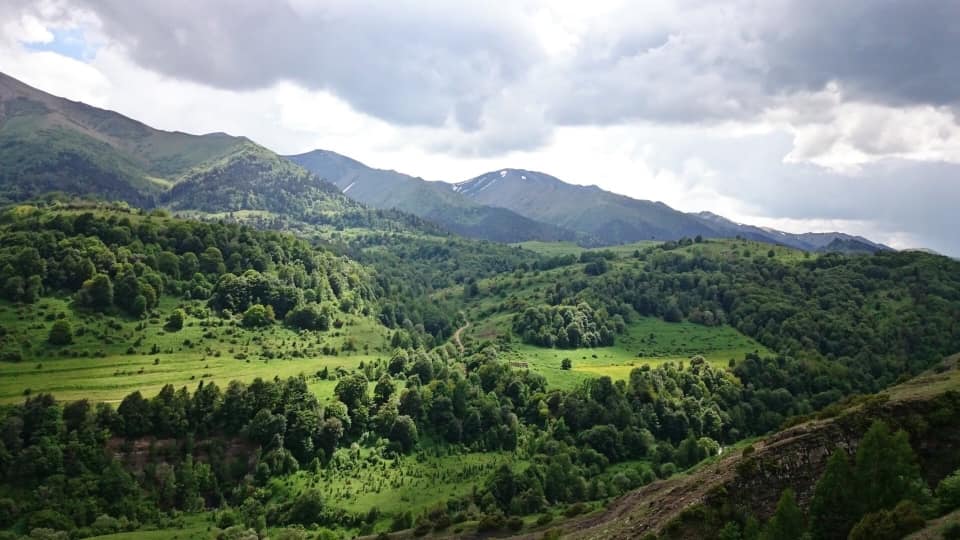
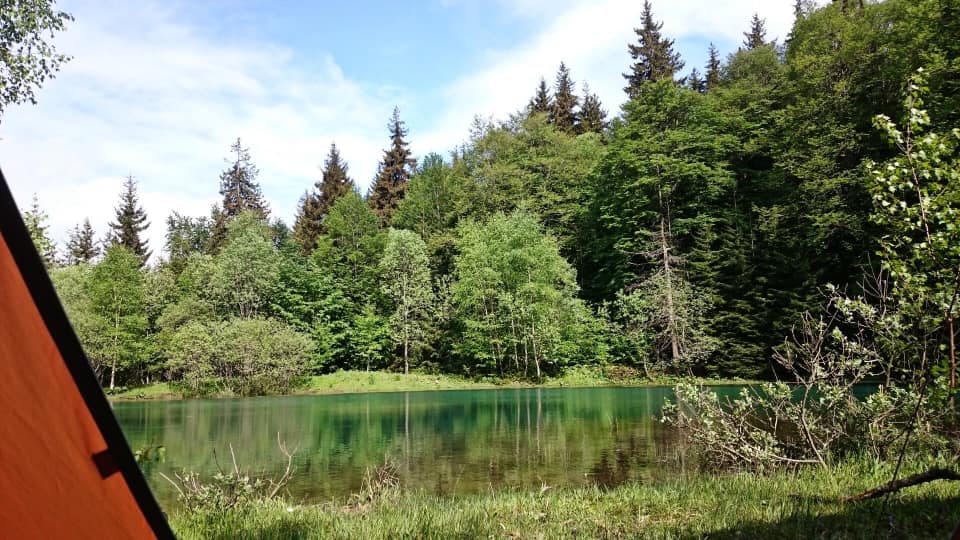
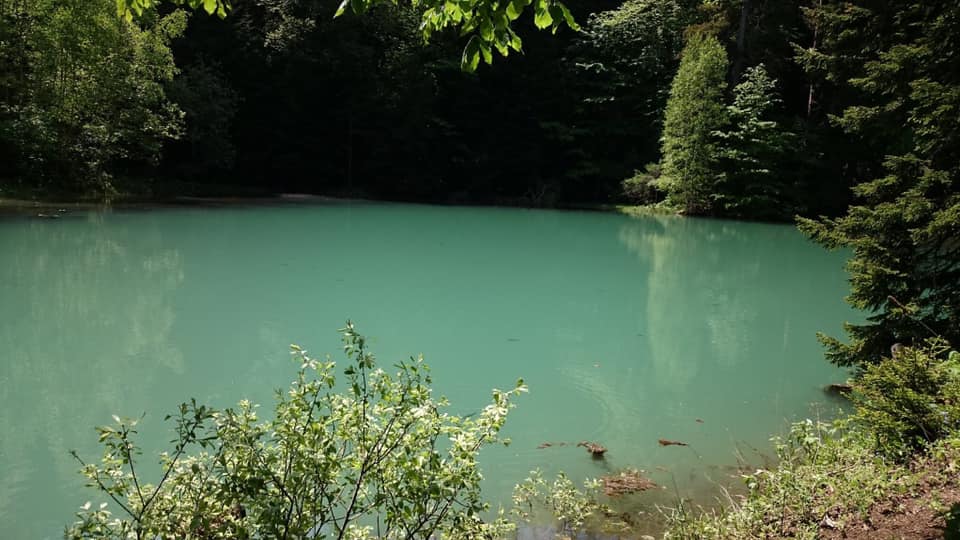
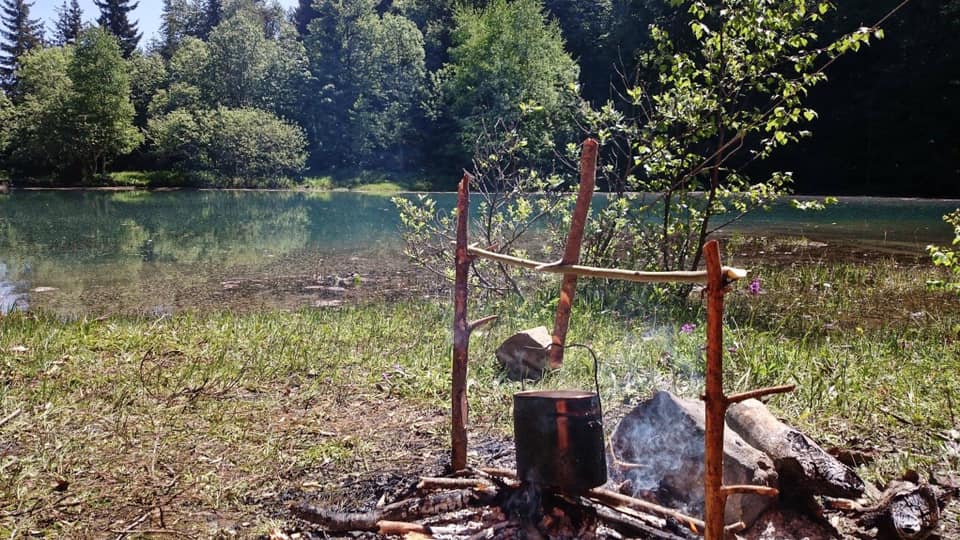
Photos are by Mariam Tsintsadze from the Facebook Group: Spend your summer in GEORGIA
UPLISTSIKHE CAVE TOWN
Archaeological consensus identifies Uplistsikhe as one of the earliest urban settlements in Georgia, assuming strategic significance within the heartland of the ancient Kartli kingdom (known as Iberia in Classical times). It emerged as a significant political and religious hub for the region.
With the advent of Christianity in Kartli during the 4th century, Uplistsikhe's prominence appears to have waned, yielding ground to the newly established centers of Christian culture, namely Mtskheta and subsequently Tbilisi. Nevertheless, Uplistsikhe regained prominence as a crucial Georgian stronghold during the 8th and 9th centuries, amid the Muslim conquest of Tbilisi. Subsequent Mongol invasions in the 14th century culminated in the town's decline, rendering it virtually abandoned, only serving as sporadic shelter during foreign incursions.
According to legend, the cave town was predominantly constructed by enslaved individuals who were armed with an axe. Their freedom was promised once the axe wore out from use.
The Uplistsikhe complex can be roughly categorized into three segments: the southern (lower), middle (central), and northern (upper) regions, encompassing an approximate area of 8 hectares. The central portion is the largest, hosting the majority of rock-cut structures. It is connected to the southern part via a narrow rock-cut pass and a tunnel. Radiating from the central "street," narrow passages and staircases lead to various structures.
While many of the caves lack ornamentation, larger structures feature coffered tunnel-vaulted ceilings, imitating the appearance of logs. Niches can also be found in some larger structures, possibly employed for ceremonial purposes.
Crowning the complex's summit is a Christian basilica, crafted from stone and brick in the 9th-10th centuries. Excavations have unearthed a plethora of artifacts spanning different epochs, including jewelry made of gold, silver, and bronze, along with samples of ceramics and sculptures. Numerous of these relics are under the guardianship of the National Museum in Tbilisi.
In 1920, an earthquake caused considerable damage to several vulnerable sections. The Uplistsikhe cave complex has been nominated for inclusion in the UNESCO World Heritage program since 2007.
Among the fascinating artifacts within Uplistsikhe are:
The Antique Theatron, located on the southwestern fringes of the complex, dating back to the 2nd-3rd centuries AD. The ceiling exhibits exquisite adornments, with the central portion designated for the stage and the now-ruined side intended for spectators.
The Jail, situated on the left side of the main thoroughfare, is a deep hole in the road designed to publicly shame prisoners.
King Tamar’s Hall (named after Tamar, though she never resided there) was designed for rituals and celebrations.
The Apotheke houses traces of various medicinal plants, including a stone embedded with seashells, attesting to the region's ancient oceanic history.
The Secret Tunnel extends 41 meters down to the Mtkvari bank and was utilized to provide sustenance and water to the settlement during sieges.


 ქართული
ქართული
 Русский
Русский

